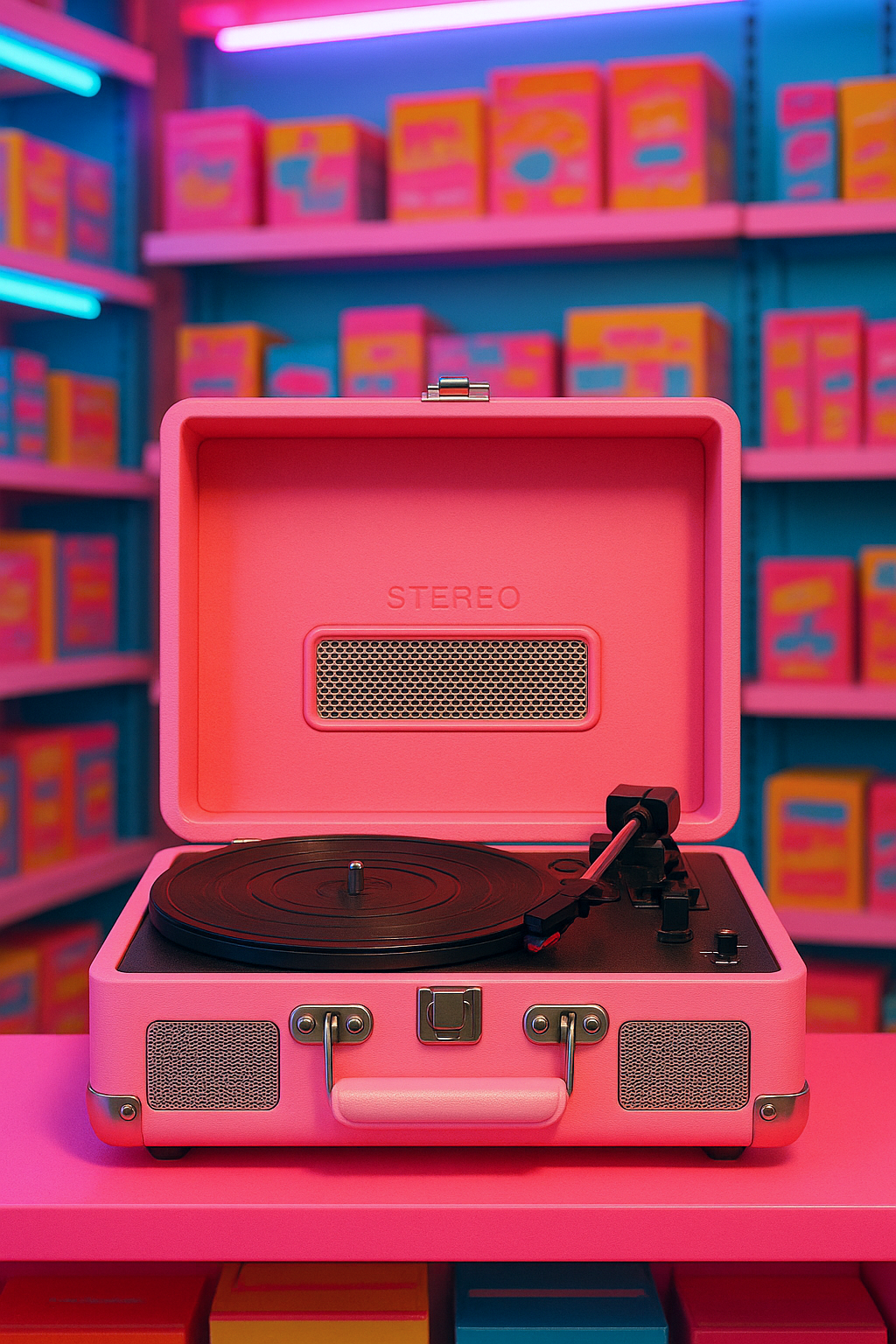Welcome to the captivating world of vinyl! You’ve got your turntable, maybe a few records, and you’re ready to experience that warm, analog sound. But as you start connecting things, you might encounter a term that sounds a bit technical, a bit mysterious: the "phono preamp." Perhaps you see a switch on your new turntable labeled "Line/Phono," or you notice your amplifier has a special "Phono" input, while your friend’s setup uses a separate little box. What’s the deal? Is this thing optional, or is it the secret handshake into the vinyl club?
Let’s cut to the chase: if you want to hear your records as they were intended to be heard – or, in many cases, hear them at all through your system – a phono preamp (also known as a phono stage) is absolutely essential. It’s not a fancy add-on for hardcore audiophiles; it’s a fundamental component of the vinyl playback chain.
The Whisper of the Groove: Understanding the Phono Signal
To understand why you need a phono preamp, we need to peek into the fascinating science of how a vinyl record actually works.
When a record is cut, the music isn't just etched into the grooves willy-nilly. A specific equalization standard, known as the RIAA equalization curve, is applied. In simple terms, during the record mastering process, the bass frequencies are significantly reduced, and the treble frequencies are significantly boosted. Why this seemingly counterintuitive step?
-
Saving Space: Bass frequencies create wide grooves. Reducing them allows for more music to fit on a record and prevents the stylus from literally jumping out of the groove on loud bass notes.
-
Reducing Noise: Boosting the high frequencies helps to override the inherent surface noise (hiss, crackle) of the vinyl medium.
The phono cartridge on your turntable, with its tiny stylus tracing these modulated grooves, produces an electrical signal. But this signal has two characteristics that make it incompatible with the standard inputs (like AUX, CD, or Tape) on your amplifier or powered speakers:
-
It’s Very, Very Quiet: The output level of a typical phono cartridge is minuscule, measured in millivolts (mV) – far lower than the "line level" signal produced by a CD player, streamer, or DAC.
-
It Carries the RIAA Curve: The signal still has those reduced bass frequencies and boosted treble frequencies.
This is where the phono preamp heroically steps in. It has two critical jobs:
-
Amplify: It boosts the feeble signal from the cartridge to a standard line level that your main amplifier can work with.
-
Equalize: It applies an inverse RIAA curve, precisely boosting the bass and cutting the treble to restore the original flat frequency response of the music. Without this crucial equalization, your records would sound thin, tinny, and utterly lifeless.
For a deeper dive into the technicals of RIAA, resources like SoundGuys' explanation of RIAA equalization can be very illuminating.
The Big Question: Do You Need an External One?
So, we’ve established a phono preamp is necessary. The next question is, where does it live in your setup? There are a few common scenarios:
Scenario 1: Your Turntable Has a Built-In Phono Preamp
Many modern entry-level and mid-range turntables come with a phono preamp conveniently built right in.
-
How to Spot It: Look for a small switch on the back, often near the RCA output jacks, labeled "Phono/Line" or similar.
-
How to Use It: If you want to use the turntable's internal preamp, set this switch to "LINE." You can then connect the turntable directly to any standard line-level input (AUX, CD, Tape, etc.) on your amplifier, receiver, or powered speakers.
-
Pros: Utter simplicity, cost-effective (no immediate need to buy another box).
-
Cons: The quality of built-in preamps can vary widely. They are often designed to meet a price point and may not offer the same sonic performance or flexibility as a dedicated external unit.
Scenario 2: Your Amplifier or Receiver Has a Dedicated "PHONO" Input
Many integrated amplifiers and receivers, especially vintage models but also some contemporary ones, include their own phono preamp section.
-
How to Spot It: Look for a pair of RCA input jacks on the back of your amp specifically labeled "PHONO." You'll usually find a grounding screw (a small metal post or screw) nearby, labeled "GND" or with the ground symbol.
-
How to Use It: If your turntable has a Phono/Line switch, set it to "PHONO" (to bypass its internal preamp, if it has one). Connect your turntable's RCA cables to these "PHONO" inputs and ensure you connect the turntable's ground wire to the grounding screw on the amp.
-
Pros: A neat, integrated solution. The quality can be quite good, particularly in well-regarded vintage gear or higher-end modern amplifiers.
-
Cons: If your amp doesn't have this input, this option is off the table. Quality still varies.
Scenario 3: Neither Your Turntable Nor Your Amplifier Has a Phono Stage
This is common if you have a turntable without a built-in preamp (many audiophile-grade turntables omit them to allow user choice) and an amplifier with only line-level inputs (e.g., many modern digital amps, soundbars, or simple powered speakers).
-
The Solution: In this case, an external phono preamp is not just an option, it's a necessity. This standalone box sits between your turntable and your amplifier/powered speakers.
-
How to Connect It: Turntable RCA outputs & ground wire -> External Phono Preamp's "Input" jacks & ground post -> External Phono Preamp's "Output" jacks -> Any Line-Level Input on your amplifier or powered speakers.
Why an External Phono Preamp Can Be Your First Big Upgrade
Even if your turntable or amplifier has a built-in phono stage, investing in a dedicated external phono preamp is often one of the most impactful and cost-effective upgrades a new vinyl lover can make. Here’s why:
-
Superior Sound Quality: This is the primary driver. External phono preamps, even budget-friendly audiophile models, are designed with one job in mind. They often feature better quality components, more robust power supplies, and more accurate RIAA equalization than the often-compromised circuits tucked into a turntable or a multi-purpose amplifier. The result? Greater clarity, improved dynamics, a lower noise floor, and a more engaging musical presentation. This pursuit of sonic purity through dedicated, quality components is a philosophy we deeply believe in at XJ-HOME.
-
Cartridge Compatibility (MM vs. MC): Most built-in phono stages are designed for Moving Magnet (MM) cartridges, which are common on entry-level to mid-range turntables due to their higher output. However, as you explore higher-end audio, you might encounter Moving Coil (MC) cartridges. MC cartridges generally offer a more refined sound but have a much lower output and specific loading requirements. Many external phono preamps offer switchable MM/MC compatibility, or are dedicated MC units, opening up a world of cartridge upgrade possibilities that built-in stages simply can't accommodate.
-
Gain and Loading Options: For those who really want to fine-tune their sound, some more advanced external phono preamps offer adjustable gain (to better match cartridge output) and electrical loading (impedance and capacitance). This allows you to optimize the performance of your specific cartridge, though for beginners, a quality unit with fixed, well-chosen settings is usually perfect.
-
Isolation: A separate box means the delicate phono circuitry is further isolated from the mechanical and electrical noise within the turntable or main amplifier, potentially leading to cleaner sound.
The Dreaded Hum: A Quick Word on Grounding
One common frustration for new vinyl users is a persistent humming sound. More often than not, this is a grounding issue. Your turntable should have a thin ground wire (often with a small spade or U-shaped connector) alongside its RCA cables. This wire must be connected to the grounding post on your phono preamp (whether it's built-in to the amp or an external unit). If it's not connected, or if the connection is loose, you'll likely get hum.
Your Next Sonic Step
Understanding the role of the phono preamp is a key milestone in your vinyl journey. It's the bridge that correctly translates the delicate information in your record grooves into the music you hear. While built-in solutions are convenient starting points, don't underestimate the transformative power of a good external phono preamp. It's often the first upgrade that truly elevates your listening experience, revealing more of the magic hidden in that black vinyl.
As you explore the path to better sound, remember that each component plays a role. Investing wisely, even in seemingly small boxes like a phono preamp, can bring you significantly closer to the heart of the music. At XJ-HOME (https://xenonjade.com), we believe this journey of discovery and refinement is what makes the pursuit of great audio so rewarding.





Leave a comment
All comments are moderated before being published.
This site is protected by hCaptcha and the hCaptcha Privacy Policy and Terms of Service apply.